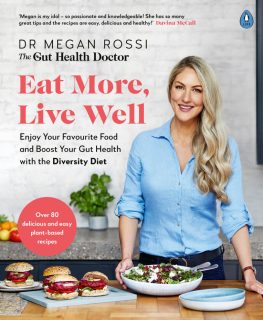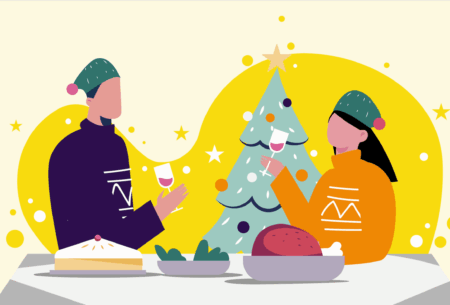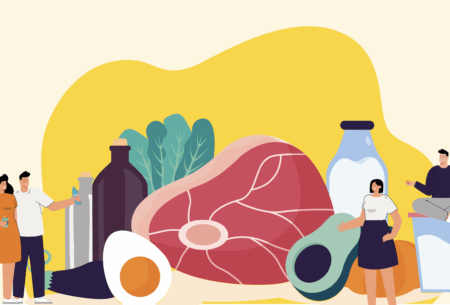We’ve all had them at one time or another – but there are a lot of rumours about what your cravings are trying to tell you. Food cravings are essentially urges to eat a specific food and are hard to resist. They’re not to be confused with hunger, which can be quelled by eating any food (versus just one). The most common food craving? Chocolate, and other foods that are typically high in both fat and sugar. Interestingly, men have been found to crave more savoury foods, while women crave more high-fat sweet foods, like chocolate.
In a nutshell, cravings can be completely normal and nothing to worry about – they’re not inherently ‘bad’!
So where do cravings come from?
There are a few different theories about what causes food cravings – and the research so far suggests they’re most likely responses to our lifestyle or environment that we learn over time.
- A “conditioned response”. It’s thought that cravings are essentially responses to our behaviour and/or environment. For example, if we repeatedly link a food with social events, situations or certain feelings, we’ll crave that food more. Think about eating popcorn at the cinema, or cake for a mid-afternoon slump at work. Our behaviour reinforces expectation.
- A “hedonic reward”. This means it’s all about eating for pleasure (not hunger). Essentially, when we eat certain foods (most often energy-dense foods), we get a surge of dopamine and experience pleasure, which our brain records for next time: enter increased craving for these foods.
Now let’s bust some common craving claims…
- Is it a nutrient deficiency?
While it’s a common belief that cravings are a sign of nutrient deficiencies (i.e. the idea that we crave certain foods that contain nutrients we’re deficient in), there’s little evidence to back this up and it’s unlikely to be the main reason we crave a food.
- Is it hormones?
Many women find they get more cravings just before their period (especially chocolate!), but there isn’t good research to back up the idea that hormones cause cravings. In fact, one study showed that women in menopause still got chocolate cravings, so they’re unlikely to be caused by our menstrual cycle – at least not alone.
So, what to do about them?
It all depends on how much they’re influencing your diet…
1) If you find that your cravings are leading to you grabbing for fast food most days, and in turn it is getting in the way of your plant point goals, then it’s time to take action. You see, it is possible to ‘turn down’ (and even off!) those cravings, by altering your taste buds. I share one of my client case studies in Eat More, Live Well about how we did just that. And it’s not just anecdotes, but studies have shown that after just two weeks of making small tweaks to your diet, not only do your tastebuds become more sensitive to sweet tastes but the pleasure associated with eating plants increases – essentially our food preferences can evolve, if we let them.
2) If it’s not necessarily the frequency but rather the binging that follows when a craving strikes, it’s worth checking out my Mindful Eating protocol in Eat More, Live Well. After 8 weeks following this, 90% of my clients manage to kick those negative relationships and are able to enjoy those foods without the binging temptation.
What else can impact food cravings?
Our stress levels and sleep quality can also have an impact on our food cravings.
- Stress: The release of the hormone cortisol when we’re stressed can increase food cravings. This may be due to the interaction with the appetite and reward systems in our brain.
- Lack of sleep: One study showed that cutting nightly sleep by a third significantly increased food cravings (and also appetite) and how much chocolate participants ate. Research also suggests sleep deprivation can change our taste preferences for higher fat, sweet foods.
Are our gut microbes involved?
In short, yes! Studies on the gut-brain axis (the two-way communication between the gut and the brain) suggest that our gut microbes could significantly influence our food choices.
How?
- Our GM (gut microbiota, the trillions of microbes in our gut) produces chemicals that can influence appetite signals from the gut to the brain – thanks to the gut-brain axis – therefore playing a role in regulating our eating habits. They have their own food preferences too!
- Our GM has also been shown to produce other chemicals, including dopamine, which we know is involved in regulating our eating behaviour – BUT most of the research is in animals, so we can’t say for sure how this can affect humans just yet.
- Our oral microbiome (the billions of microbes in our mouth) also influence taste and in turn can impact food choice.
As the most commonly craved foods tend to be more processed foods like chocolate, chips, cookies (which, while they’re absolutely no bad thing in moderation, tend to be higher in added sugar and saturated fat), if you’re filling up on these foods and not getting enough high-fibre plant-based goodness your gut microbes love, it could risk ‘starving’ your gut microbes and influence their diversity. And as you likely know, if you’ve been following on for a while, it’s this diversity that’s a marker of good gut, and overall health.
Top tips to manage food cravings
- Sleep. Aim to get your 7 to 9 hours of sleep every night and try to ditch your phone for at least 30mins before bed. You can check in on your own sleep quality with my Sleep Assessment here.
- De-stress. Managing stress and anxiety is also important – that’s where my seven 5-minute simple relaxation techniques in Eat More, Live Well to help relieve stress can help.
- Mindful eating. A number of studies highlight the benefits of mindful eating in managing food cravings – check out the Mindful Eating Protocol in the book.
- Avoid ‘cutting out’ craved foods. There’s no need to completely cut out foods, and the chances are you may crave them more. That’s where the INclusion not EXclusion principle of the Diversity Diet comes into play.
- Switch it up. If your cravings are bothering you, try to mix up when you eat certain foods to break ‘conditioned’ habits, such as going for a daily walk when you’d usually crave a sweet treat mid-afternoon.
- Get rid of the guilt. If having some chocolate before that time of the month (or every day like me!) makes you feel good, don’t feel guilty about it! Why not mix things up next time and try my Prebiotic Cookie Dough Drops, giving your gut microbes what they crave too.
For more crave-worthy snacks and sweet treats using the goodness of only whole fruit (no added sugar), check out Eat More, Live Well – my Prebiotic Cookie Dough Drops (pg. 163) are a must-try!













